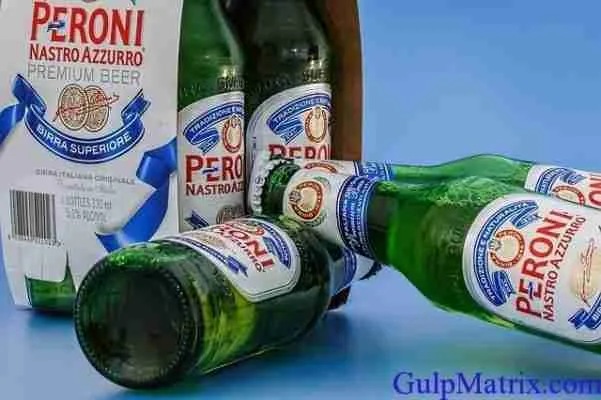Detailed Procedure and Stages on How to Brew Lager Beer Industrially

The production and brewing process of lager beer on an industrial scale is an exciting process that is also very technical. This means that all the minute details in the production process such as temperature specifications, laboratory procedures and accurate measurements of raw materials used in the production process must be strictly adhered to if the lager beer produced is to be standardized as a scientifically brewed product that meets laid down specifications.
There are procedures and stages in the industrial brewing of lager beer. These stages and procedure starts with the cleaning operations of the sorghum used which is the main raw material for brewing and then to other stages such as mashing, filtration, centrifugation, sparging, lagering, bottling, pasteurization, packaging/labeling and final delivery to the consumer.
We shall now examine all these stages and procedures one after the other.
Cleaning Operations of Sorghum
Sorghum is a major raw material in the brewing of lager beer. However, the grains must undergo effective cleaning operations to remove unwanted grains, stones, metallic contaminants and sand particles. First, the grains are taken to the blower in order to remove dust particles and other unwanted materials. It is then taken to further cleaning operations by passing it to a shaker and then to a magnet in order to remove any metallic particle. After this operation, the grains are transferred to silos where they are stored in readiness to be passed to the brew house when needed.
Milling Operations
The grains are transferred to the milling machine from the silos via conveyor belts where they are milled and reduced into grits in order to expose them to enzymatic action during the boiling process. Usually, 208 tips of sorghum grain is used for a brew and that is about 5200kg(1tips = 25kg).
Boiling Operations
The milled grits are transferred to the mash kettle where the boiling temperature is maintained at about 90ºC. Here, Calcium chloride is added to the boiling grits as a co-enzyme to speed up the reaction in a quantity of about 5kg for a brew. In order to maintain an optimal pH, potassium hydroxide is also added to the mash kettle. The mash is further boiled to a temperature of about 95ºC for some hours before it is transferred to the mash tun.
Mash Tun Operations
In the mash tun, the mash is allowed to stand for about 45minutes and is then cooled to 60ºC before the enzyme, aminoglycosylase(AMG) is added to it to further speed up the process. This enzyme works at a temperature of 60ºC for 1hour 45minutes. It is then heated further to 78ºC stop the action of AMG.
Mash Filter Operations
In order to be sure that the mash in the mash kettle is due for transfer to the mash filter, iodine test is carried out. This test is done by adding some drops of iodine on some quantity of mash from the mash tun on a flat tray. If the mash turns blue-black, it means that all the starch have not been converted into glucose which means that further heating is required. However, if no noticeable change is observed, then the mash in the mash tun can then be transferred to the mash filter. In the mash filter, sparging is carried out, which is the separation of the spent grain from the wort. This is done with the aid of a filter machine that uses hot water maintained at a temperature of 78ºC and sparging is stopped only when the gravity reaches 10. The wort collected after filtration is transferred to the Underback, which is a large temporary storage tank.
Wort Kettle Operations
In the wort kettle, the wort is boiled for at least 2hours or 2.5hours (depending on the steam pressure). During this operation, when the wort has boiled for about 1hour, hops are added and boiling continued until the gravity of the wort becomes 11.6 which is the cast out gravity. At this gravity, the wort is now ready to be cast of the wort kettle and taken to the whirl pool.
Whirl Pool Operations
In the whirl pool, the wort is allowed to rest for at least 30-40 minutes. In this stage, particles that are present in the wort are allowed to settle at the bottom of the tank. Before the wort is transferred to the fermenting vessels, the wort lines are sterilized with hot water to kill the microorganisms. The hot water is allowed to run through the lines for about 30minutes before they are cooled using cold water. After sterilizing, the wort can now be run through the lines. The whirl pool has a heat exchanger foe cooling the wort.

Beer
Fermenting Vessel and Centrifuge Operations
In the fermenting vessels, yeast is added and allowed to stay between 5 to 7 days. It is then transferred to the centrifuge where it is centrifuged and the yeast removed from the wort. The centrifuged wort is then transferred to the storage vessel where it is left for about 21 days for lagering and maturation. Purging is also carried out to reduce yeast count during storage.
The centrifuge separates the yeast from the beer by using a centrifugal force of 1472rpm. After centrifugation, the beer is passed into the storage tanks for maturation and maintained at a temperature of 8ºC for flavor development.
Filter Room Operations and Bottling
There are two types of filter aids used in filtration of wort—the white and yellow powder. There are also two tanks where the filter aids are mixed enroute to filter. The first one is the precoat and the other is the dozier. During filtration, the incoming beer is maintained at the presence of 1.9bar while the beer leaving the filtration machine is maintained at a pressure of 2bars. It should be noted that before filtration commences, the filtration machine is first sterilized with hot water at a temperature of 96ºC with caustic soda.
It is very important that during filtration, two stages of filter aids transfer to the filtration machine is carried out, the first precoat and second precoat. These filter aids are soluble in water and helps trap particles from the wort. Precoat powder is gotten from diatoms.
The filtered product is then transferred to the BBT(Bright Beer Tanks) where carbon(IV)oxide is bubbled into it alongside biafoam and ascorbic acid. The product is now ready for bottling before being packaged for sale to the consumers.


